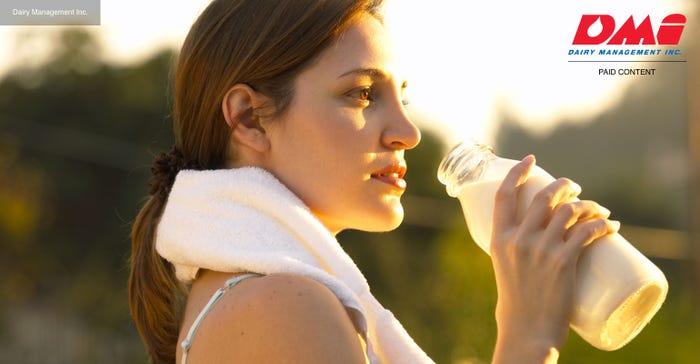What this functional beverage gets right about branding and customer experienceWhat this functional beverage gets right about branding and customer experience
“Throw out everything you know about creating products for the shelf," says Dirty Lemon CEO Zak Normandin. "None of it applies to e-commerce."

Three years after launching a daring beverage distribution model in which thirsty consumers order bottles of functional drinks via text, Dirty Lemon continues to redefine how a brand can tightly control consumer experience. This is an attribute that Dirty Lemon co-founder and CEO Zak Normandin says is paramount to acquiring and maintaining loyal customers.
We caught up with Normandin to learn how his business model is faring in an increasingly digital-first environment, where brands have access to shoppers in a way unlike any before.
Since Dirty Lemon launched in 2015, have consumers become more comfortable with buying food and beverages online?
Zak Normandin: When we first started the company, we were building the [text ordering] platform just as a proof of concept. We had a hunch that thanks to the success of brands outside the food space such as Dollar Shave Club, consumers would be more receptive to purchasing food products online or through SMS.
Once people try our ordering funnel, they realize it’s more convenient. I think consumers are very open to digital purchasing and thankfully, with good operation infrastructure, we can provide a quality experience that's significantly greater than what they’re finding in grocery stores.
What has been the biggest challenge in establishing this direct-to-consumer model?
ZN: The biggest challenge is in operations. In order to maintain a high-quality experience for consumers, multiple external components are required. This starts with fulfillment, communicating tracking information to consumers and shipping in a speed that's acceptable. We've heavily invested in operations and I think it’s paying off in a big way. This is especially important as we look to launch additional brands underneath our platform.
Which are …?
ZN: We have three other brand concepts we hope to launch in the next year—all in the beverage category. Dirty Lemon is a premium functional beverage line. We’re looking at expanding in sparkling water and some alcoholic products as well.
I understand that Dirty Lemon recently partnered with Vogue to launch a special flavor of Dirty Lemon. In what ways was this a good partnership?
ZN: What’s great about our operational infrastructure is we can truly think with a blank slate about who we want to partner with. We have very few limitations in regard to design and flavors because we’re not working with retailers. We don’t need approval.
Vogue was the right partner for us because Dirty Lemon as a brand is closely aligned with the fashion community. We designed the bottle to be an accessory to modern consumers. When you’re leaving your home, you grab your keys, bag and a bottle of Dirty Lemon because it says something about who you are. Similarly, the Vogue consumer is both fashion conscious and focused on wellness, too.
Speaking of packaging, since Dirty Lemon only sells via online and mobile, how does brick-and-mortar food and beverage packaging differ from e-commerce-specific packaging?
ZN: Throw out everything you know about creating products for the shelf. None of it applies to e-commerce. When we designed the Dirty Lemon package, it was all about how this product was going to look in a photo. Would you be able to look out in a crowd and recognize the product immediately without reading anything on it?
Coming from a world of Whole Foods and Target, buyers often push brands to advertise all the talking points of a product on the front of the package. We’re in a unique position to use our social media and website to communicate all of those points and have the product stand for itself.
For food and beverage brands adopting a digital-first strategy, designing e-commerce packaging should be a totally different mindset from designing for the shelf.
Dirty Lemon has experimented with different pop-up concept stores in New York City. What’s the benefit of pop-up stores?
ZN: Last summer we opened a non-alcoholic bar, called the Drug Store, which only served Dirty Lemon drinks. (It was so successful that we’re relaunching the pop-up as a full-time store.) There, we tested a variety of possible flavors, and found that a rose-flavored profile was a bestseller. From that, we created a bottled version of the flavor, called Rose.
On Valentine’s Day, we launched our new rose flavor with a Rose Room pop-up. We texted all of our 20,000-plus customers in New York City. Every visitor received a free bottle of Dirty Lemon and we sold flowers for charity to benefit the Lower East Side Girls Club, which trains girls to become leaders in their community. We had an incredible turnout.
This shows how validating a product at retail, and making sure it will do well before a nationwide launch, is a smart way to launch new products. Pop-ups allow us to collect data and then make informed decisions for new products. Case in point, shortly after the rose pop-up, we sold out of our promotional run almost immediately.
I imagine these pop-ups serve at great marketing, too.
ZN: Absolutely. We had thousands of photos of the Drug Store online last year, and with the Rose Room this year. All brands need to think about having a more omnichannel marketing approach.
It’s not enough to just hope a product is going to be presented well on store shelves—the future of retail is for brands to have more control over how they interact with shoppers. Consumers are looking for more out of the brands they are purchasing now more than ever. They want an immersive experience.
Dirty Lemon thinks about the beverage industry in a different way than traditional retail brands. When we spend dollars on a marketing activation, we see immediate return on that investment because we have single-channel distribution. It’s challenging to see marketing ROI when you’re selling products into grocery stores.
About the Author
You May Also Like





